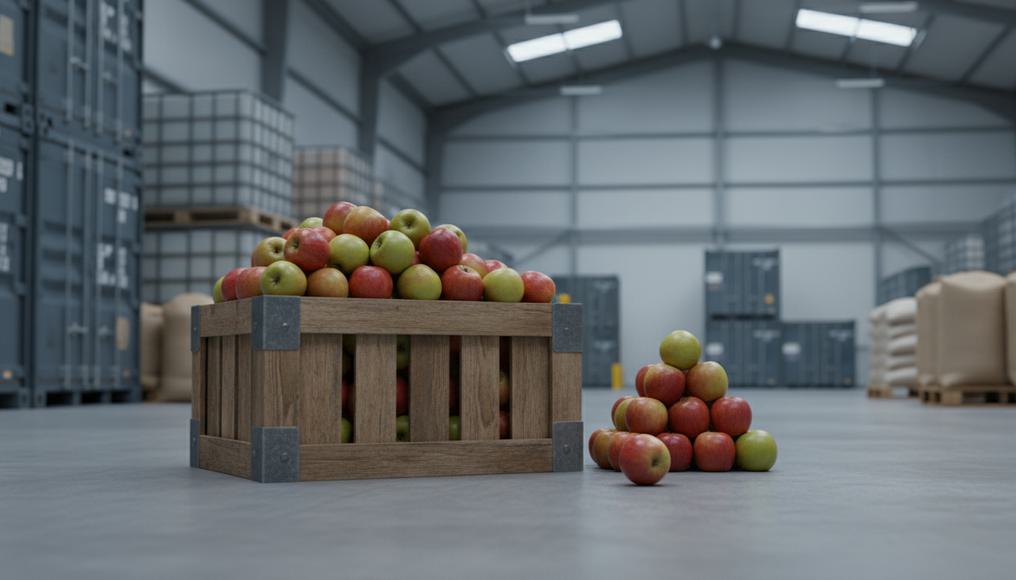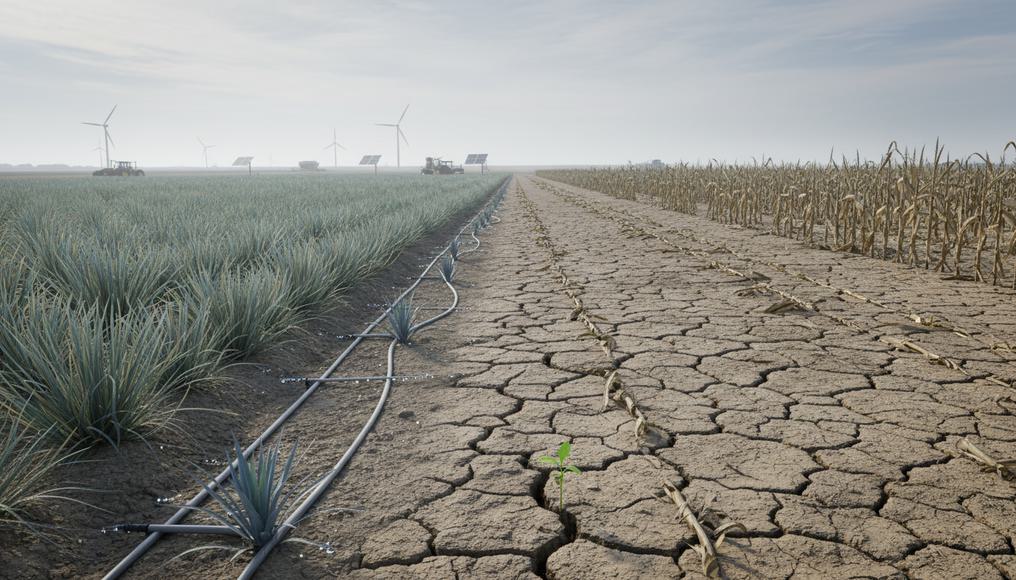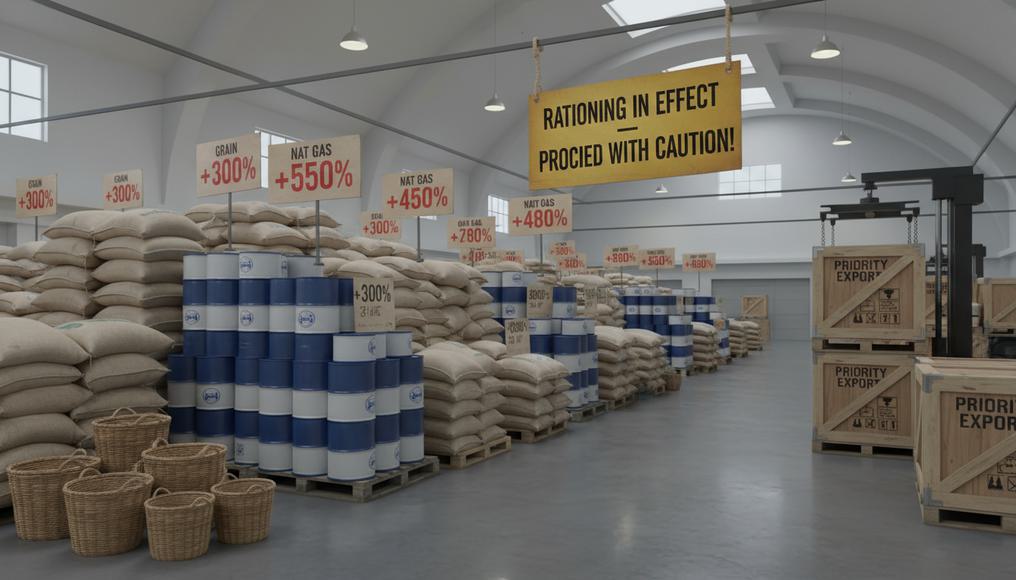
Scarcity, Choice, and the Foundations of the Price Mechanism
Imagine you’re staring down a buffet where the good stuff—like those juicy shrimp cocktails—is running low, and everyone’s jostling for the last bite. That’s scarcity hitting you right in the face: our endless desires slamming into the world’s limited supplies of land, labor, and money. It forces tough choices everywhere. Want that shiny new smartphone or a spontaneous road trip? Sorry, you can’t have both without consequences. This is where the price mechanism steps in as the market’s clever umpire, using prices to steer resources to where they’re most valued—no need for a bossy government; it’s all about that invisible hand guiding the chaos. For a deeper dive into these foundational concepts like scarcity, production possibility curves (PPCs), and resource allocation in CAIE AS Level Economics, check out our guide on CAIE AS Level Economics: Scarcity, PPCs and Resource Allocation.

Think about the basic demand and supply graphs that form the backbone of CAIE AS Level Economics. The demand curve dips downward because as prices fall, you’re more likely to grab extra apples or whatever’s on offer—who wouldn’t? Supply curves climb upward since higher prices get producers excited to supply more. Where they meet? That’s equilibrium, the magic point where everything balances—no leftovers piling up or desperate lines forming. But scarcity throws curveballs: a sudden oil shortage from international tensions, and prices shoot up, pushing you to carpool or switch rides like it’s the gas crises of old.
Efficiency comes into play when resources are used to create the maximum value, like farmers in drought-stricken areas opting for drought-resistant crops over water-hungry ones during tough times. Inefficiency? That’s surpluses going to waste or shortages breeding underground markets—pure economic tragedy. Let’s tie this to real-world vibes from recent years. Those 25% steel tariffs in the US added a whopping $22 billion to costs, according to government reports, making manufacturers decide: source locally and slow production, or pass on higher prices for your gadgets? It dented efficiency short-term but sparked pushes toward innovative, eco-friendly steel production.
For primary products like grains, regional dry spells kept outputs steady at around 139 million tons, but quality suffered, as noted by agricultural agencies. Prices surged, prioritizing exports to high-demand areas in Asia while everyday folks shifted to alternatives like rice at a moment’s notice. Producers responded by investing in better irrigation systems, flipping scarcity from a curse to a catalyst for smart changes.
Hey, I get it—graphs might not scream excitement, but doodle one quick: scarcity on one axis, your exam success on the other. This framework unravels why markets for everyday staples or international currencies behave the way they do—it’s all a symphony of decisions. If you’re nodding along, you’re already ahead of the game in understanding the microeconomy.
Example
Flashback to those grain shortages caused by dry spells in key growing regions. Supplies tightened globally, with prices peaking at a 30% increase based on international food organization data, forcing households to pick between staples like bread and other basics. Farmers smartly invested in technology rather than just expanding fields, turning limitation into a strategic win—much like navigating a high-stakes reality show.
Actionable Takeaways
- Look for scarcity signals next time you’re shopping: Why are those trendy fruits pricier? Weather woes or buzz?
- Sketch a simple demand-supply diagram for something you love, like chocolate, and pinpoint the equilibrium.
- Chat with a friend: Do government aids like subsidies boost or block efficient resource use?
This foundation isn’t just theory—it’s the breathing basics of economics that pop up everywhere on your syllabus. To reinforce these ideas with detailed notes, explore our CAIE AS Level Economics Study Notes.

Demand and Supply Curves: Building the Market Model

– Read the full analysis on Demand and Supply Curves.
Admit it: The demand and supply model feels like the go-to plot for every economic story—reliable, full of twists, and applicable to everything from street food to international travel. In CAIE AS Level Economics, it’s your go-to for decoding the price system in the microeconomy. Demand starts with ‘effective demand,’ meaning desires backed by actual cash (dreaming of luxury isn’t enough without the funds). Supply? It’s producers asking, ‘Can I make a profit here without losing my shirt?’ These forces set prices and quantities for commodities like energy, agricultural goods, logistics, or even exchange rates between major currencies.
On the individual level, your demand curve slopes down: lower prices mean more coffee runs for you. Aggregate it across everyone, and you get the market demand curve. Supply does the opposite—higher rewards mean more output from suppliers. Take recent shipping issues in key trade routes: Demand for transport stayed strong thanks to steady needs for goods, but smaller players pulled back when detour expenses got too steep, showing the difference between personal and overall market responses.
What shakes things up? Demand can shift rightward with rising incomes, changing tastes (think the boom in plant-based options), or growing populations. Substitutes and complements play tricks too—a drop in rail fares could dent road travel demand. Future expectations matter: Hoard if you sense shortages ahead. For supply, factors include production costs (higher wages shift left, reducing output), technological advances (right shift for more efficiency), government policies like taxes or incentives, and nature’s whims. In currency markets, a surge in exports from a region can boost its money’s supply.
Key distinction: Movements along the curves happen with price changes alone—like when grain prices hit $8 per unit, buyers cut back but stick to the curve (movement down demand). Shifts are from other factors: A dry season pushes supply leftward (less available at any price). In Europe recently, parched lands shifted grain supply left, with yields holding but quality dropping, leading to a 30% price jump without much demand change. Elsewhere, abundant harvests shifted supply right, calming global nerves. For energy, production adjustments kept prices stable around $80 per barrel despite ups and downs. Logistics faced curve shifts from route disruptions, multiplying costs through longer paths, while fuel levies caused movements along the supply line—fewer hauls at previous rates.
You’re turning into a market sleuth with this knowledge. For agricultural items, a health scare might shift demand left (fewer sugary treats sold); currency exchanges react to political news. It’s reminiscent of survival tales where limited supplies lead to clever swaps and price battles. Test your understanding with practice questions in our CAIE AS Economics – Topic Questions resource.
Example
Picture the logistics jams from conflicts in vital waterways. Goods demand didn’t waver, but supply curves shifted left as operators couldn’t conjure extra capacity overnight—prices rocketed, mirroring dystopian supply struggles but in real-world cargo terms.
Actionable Takeaways
- Follow a commodity like energy prices over a week; guess shifts from headlines, such as production meetings.
- Experiment with drawing: Plot a 10% price increase—is it a slide along or a full shift?
- Relate personally: Why didn’t a transit fare increase crush usage? It’s often a stiff response along the curve.
Nail this model, and you’ll predict everyday cost changes with confidence.

Price, Income, and Cross Elasticity of Demand: Measuring Responsiveness

– Read the full analysis on Price Elasticity of Demand.
– Read the full analysis on Income Elasticity of Demand.
– Read the full analysis on Cross Elasticity of Demand.
Elasticity might sound like a stretchy fitness term, but in CAIE AS Level Economics, it’s about how demand reacts to price tweaks, income changes, or price moves in related goods. Time plays a huge role: Short-term, you’re locked in (hard to quit your daily brew instantly); long-term, options multiply. This is vital for grasping why essential foods hold steady in crises or why non-essentials swing wildly in good times. We’ll break it down without drowning in numbers.
Price elasticity of demand (PED) is the percentage change in quantity demanded divided by the percentage price change—it’s negative because rising prices typically mean less buying. Income elasticity (YED) swaps price for income: Positive for standard items (under 1 for basics like grains, over 1 for treats), negative for those you ditch as you get wealthier (cheaper transport fades). Cross elasticity (XED) looks at one good’s demand response to another’s price: Positive for rivals (soda brands battling), negative for pairs that go together (devices and accessories).
Quick math: If fruit prices rise 10% and purchases fall 5%, PED is -0.5 (not very responsive—you’re committed). Values over 1 in absolute terms mean elastic (big reactions), exactly 1 is balanced, under 1 inelastic. YED magnitudes sort essentials from extras; XED signs reveal friends or foes. Extremes include perfectly elastic (horizontal curve: infinite response at a set price) or inelastic (vertical: zero change, no matter the cost).
On straight-line curves, responsiveness is higher at the top (high prices, choosy buyers) and lower at the bottom (deals hook you). Time alters it: Recent fuel PED was about -0.2 in the short run (people complained but kept driving), but longer term, it loosens as alternatives like electric options gain traction. Influences on PED include availability of alternatives (more options = bouncier), necessity level (must-haves stick), and duration (more time = more flexible). YED hits luxuries harder; XED spikes with close competitors.
Business side: With elastic demand, raising prices drops revenue as sales plummet. Inelastic? Hike away for more cash. Governments target inelastic items like fuel for tax revenue; firms in rigid markets like healthcare can charge premiums. In recent trade route issues, demand for shipping was inelastic (goods must flow), so providers saw revenue jumps, though overall costs rose slightly.
For currencies, cross effects showed one strengthening against another, amplifying pressures on imports.
| Elasticity | Recent Example | Coefficient | Insight |
|---|---|---|---|
| PED | Energy | -0.2 short-term | Route issues? Users absorbed costs without quitting en masse. |
| YED | Grains | 0.5 | Rising earnings in key markets boosted needs during turbulence. |
| XED | Fuel vs. Alternatives | +0.8 | Price surges sped up shifts to greener tech like a blockbuster sequel. |
These tools forecast impacts: Low responsiveness in staples worsened recent supply hits for vulnerable groups. For exams, compute, explain, and factor in timing—elasticity demystifies market moves. If you’re preparing for the full syllabus, our CAIE AS Level Economics 2025–2026: Beginner’s Essential Guide covers these topics and more.
Example
Envision a flip-side scenario with recent grain price surges: A 30% jump, but inelastic demand kept purchases going, straining budgets. Over time, people explored substitutes like other grains.
Actionable Takeaways
- Try calculating: 20% gadget price up, 10% demand down? PED=-0.5—why so steady?
- Consider time for habits: Short-term rigid for your routine drink, longer-term flexible with swaps.
- Business view: Tax bouncy luxuries? Avoid it—gains evaporate.
Elasticity transforms confusion over costs into clear insights.

Price Elasticity of Supply: How Firms Respond to Market Changes

– Read the full analysis on Cross Elasticity of Supply.
Price elasticity of supply (PES) gauges how quickly producers ramp up or down output when prices change—time is the ultimate decider, keeping things stiff short-term but adaptable long-term. It clarifies why farming markets yo-yo while digital services expand effortlessly.
PES calculates as percentage change in quantity supplied over percentage price change—always positive since higher prices encourage more selling. A 10% price rise yielding 20% more supply? PES=2, quite responsive. Over 1 is elastic, 1 neutral, under 1 rigid. Perfectly elastic is infinite horizontal supply at a price; inelastic is vertical, fixed output.
Recent energy markets showed short-term PES around 0.1 (prices climbed to $80 on tensions, but no instant surge from reserves), while long-term, innovations like advanced extraction made it more flexible. Key drivers: Unused capacity (ready factories = easier response), time to adjust (longer horizons allow builds), resource mobility (swappable inputs = stretchier), and reserves (stockpiles smooth bumps).
What does it mean? High PES keeps markets stable, absorbing booms without crashes. Low PES? Expect wild swings—agriculture’s ties to land and seasons create price drama. In vital route disruptions, transport PES was low (scarce vessels meant costs quintupled with long delays), leaving companies to adapt slowly. Energy primaries had buffers from reserves, but external factors slowed reactions. For grains, seasonal cycles kept supply rigid, prolonging high prices from weather events.
Producers in flexible areas capture gains easily; rigid ones push for innovations. Policymakers might aid transitions in tough sectors. Recent challenges in agriculture magnified cost pressures—faster supply elasticity could have softened the blow.
Example
Energy’s recent price dance: Conflicts nudged costs up, low short-term PES hinted at potential shortages like a suspense thriller, but long-term tech interventions provided relief—elasticity as the hero’s edge.
Actionable Takeaways
- Identify PES hurdles: Why no quick grain increase from farmers? Seasons and soil constraints.
- Producer tip: In rigid markets like seasonal treats, build stocks for peaks.
- Policy debate: Support flexible innovations in farming to quicken reactions?
Short-term rigidity explains recent market roughness—supply lags behind the beat.

Market Interaction: Equilibrium, Disequilibrium, and Intermarket Links

– Read the full analysis on Market Equilibrium: Interaction of Demand and Supply.
Markets connect like a bustling social scene—demand and supply aim for balance at equilibrium, but a single change can spark disorder. Disequilibrium means imbalances: Too much supply leads to surpluses (unsold goods), too little to shortages (frantic buying).
Equilibrium is where demand equals supply, clearing the market smoothly. A demand increase from population growth raises both price and quantity. A supply drop from adverse conditions hikes prices while cutting volume. Recently, a strong currency shift increased demand for another, lifting the exchange rate by nearly 8% over the year.
Interconnections abound: Joint demand for paired goods (snacks and drinks—buy one, want the other). Substitutes see one price rise pushing demand to alternatives (streaming vs. theaters). Derived demand pulls supporting factors (logistics growth needs more workers). Joint supply means one output boosts another (energy extraction yields byproducts).
Route conflicts recently boosted derived demand for alternatives like air freight, while fuel needs rose as a complement. It’s a chain reaction—one disruption ripples worldwide.
Example
Grains and baked goods as linked demands. Supply constraints shifted curves left, raising prices, but alternative staples saw demand grow. Like a team dynamic: One member’s trouble affects the whole group.
Actionable Takeaways
- Trace connections: What pairs with your device (chargers, covers)—one’s price change impact?
- Forecast: Higher local transport costs? How does it affect rival services?
- Study prep: Sketch derived demand for workers in a resource surge.
Balance is the market’s harmony; disrupt it, and things unravel.

The Functions of Price in Resource Allocation
Prices do more than tag items—they orchestrate the microeconomy by rationing, signaling, and motivating in the price system. They direct resources to high-need areas efficiently.
Rationing assigns limited goods to top payers—recent grain price rises of 30% directed supplies to export hubs, leaving locals to adapt. Signaling broadcasts preferences: Cost spikes in logistics screamed for better routes, fueling relocation trends. Incentivizing drives action—stable energy prices at $80 spurred new explorations and holds.
In currencies, strength signals economic power, encouraging investments. For foods, prices guide crop choices toward profitable options.
| Function | Role | Recent Example |
|---|---|---|
| Rationing | Prioritizes payers | Grains to key importers. |
| Signaling | Highlights needs | Transport costs → route innovations. |
| Incentivizing | Boosts output | Energy stability → production ramps. |
Complications like aids can blur messages, and issues like environmental costs need tweaks. Still, prices enable choice-driven distribution from low to high value. For broader context on starting your CAIE Economics journey, see our Econ, But Friendly: 2025–26 CAIE A‑level Economics (9708) Starter Guide.
Example
Energy signaling recently: Tensions raised prices, rationing to critical uses, and motivated green shifts—like heroes uniting against limits in an epic tale.
Actionable Takeaways
- Spot signals daily: Egg price jumps? It’s rationing—consume wisely.
- Motivate yourself: Steep fees for goals signal dedication.
- Question: Is price allocation always optimal? Not with market power issues.
Prices act as the economy’s smart guide for resource flows.

Consumer and Producer Surplus: Measuring Market Welfare

Surpluses represent gains in the price system: The extra satisfaction buyers get and the additional earnings sellers make. They’re efficiency markers—peaking at equilibrium, falling in disruptions.
Consumer surplus is the area above the price line but below demand—your ‘willing to pay more’ bonus. It’s a welfare indicator; policies like taxes chip away at it. Producer surplus sits below price, above supply—sellers’ ‘beyond cost’ profit, attracting investments.
Shifts affect them: Demand growth expands both; supply tightness squeezes consumer side while possibly padding producer. Responsiveness matters: Rigid demand means price hikes hit buyer gains hard (recent staples: Budgets strained despite steady buys). Fixed supply amplifies losses in shortages.
Currency strength recently boosted exporters’ gains but squeezed importers’ benefits. Energy price drops lifted buyer surpluses. Logistics survivors saw profit surges, but users faced shrinks from extras.
Commodities thrive at balance for max surpluses—imbalances leak value.
Example
Your daily brew: Valued at £5, costs £3? Surplus £2 joy. Maker’s cost £1, sells £3? £2 gain. Supply crunch from weather erodes your bonus, slightly lifts theirs—like shifting dynamics in a group hangout.
Actionable Takeaways
- Personal calc: Item worth £15, pays £10? £5 surplus—bargain hunt.
- Policy thought: Levies on rigid goods? Buyer hit heavy—equitable?
- Visualize: Draw and shade surpluses; note responsiveness effects.
Surpluses gauge market health—overlook them, and gains slip away.

FAQ: Common Questions on the Price System
- Movement vs. shift in demand— what’s the difference?
Movement: Price change moves along the curve (higher price, less bought). Shift: Other factors like earnings move the entire curve (right for more buying at all prices).
- Why is PED negative?
Demand rule: Prices up, quantity down—inverse relationship, like opposites attracting then repelling.
- How does time affect elasticity?
Short-term: Habits lock in (rigid energy use). Long-term: Choices expand (bouncy alternatives). Recent events showed adaptation’s value.
- Supply shift left—what happens?
Prices surge, output drops—scarcity alert, like weather-induced lines at stores.
- YED elastic for all normal goods?
No: Basics stay under 1 (consistent needs); extras over 1 (income rises = more spending).
- XED for complements and substitutes?
Negative for pairs (one price up, other demand falls—like fuel and vehicles). Positive for rivals.
- Why low PES in agriculture?
Tied to land and cycles—can’t instantly adjust; nature dictates pace.
- Taxes’ effect on surpluses?
Shift supply left, shrink buyer surplus (worse if rigid demand), producer may dip too. Revenue for authorities, pain for market.
Closing Kicker
Wrapping up: The price system is your ally in tackling scarcity’s tricks—from recent grain gyrations to currency swings. Practice diagrams, run the numbers, probe deeper—and the microeconomy will click. You’re not cramming; you’re uncovering econ’s fun side. Made it here? You’re set for success. For more on advancing to A2 topics, explore our CAIE A2 Economics Study Notes.
References